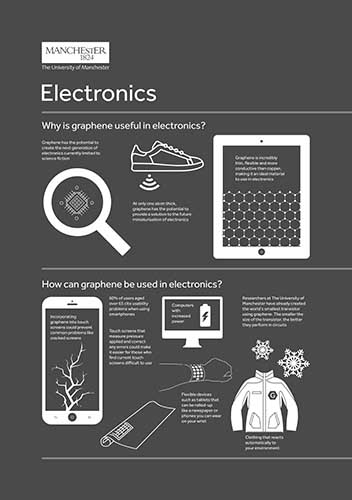How graphene can revolutionize the electronics industry
Graphene is a two-dimensional material made of carbon atoms arranged in a hexagonal lattice. It has remarkable properties, such as high electrical and thermal conductivity, mechanical strength, flexibility, and transparency. Graphene is also a potential candidate to replace silicon, the dominant material in the electronics industry, as it can enable faster, smaller, and more energy-efficient devices.
However, graphene has some challenges to overcome before it can be widely used in electronics. One of them is how to tailor its electronic properties to suit different applications. Unlike silicon, which can be easily doped with impurities to create semiconductors, graphene is inherently a zero-gap material, meaning that it has no band gap between its valence and conduction bands. This makes it difficult to switch on and off the current flow in graphene-based devices.
One possible solution is to use graphene nanoribbons, which are narrow strips of graphene with finite width and length. Depending on how they are cut, graphene nanoribbons can have either metallic or semiconducting behavior, as the edge shape and orientation affect the electronic band structure of the material. Graphene nanoribbons can also be functionalized with different atoms or molecules to modify their properties further.
Graphene nanoribbons can be used to create transistors, the basic building blocks of electronic circuits. Transistors are devices that can amplify or switch electrical signals by controlling the flow of current between two terminals using a third terminal. Graphene nanoribbons can act as the channel material in transistors, while other materials, such as metal electrodes or insulating layers, can be used to form the source, drain, and gate terminals.
Researchers have been developing various methods to synthesize and manipulate graphene nanoribbons, such as chemical vapor deposition, bottom-up assembly, or laser cutting. These methods aim to produce high-quality, defect-free, and uniform graphene nanoribbons with precise control over their geometry and functionality. However, there are still challenges in scaling up the production, integration, and characterization of graphene nanoribbons for practical applications.
Graphene nanoribbons are not the only way to tailor graphene for electronics. Other methods include creating heterostructures of graphene with other two-dimensional materials, such as boron nitride, transition metal dichalcogenides, or hexagonal boron nitride, to form hybrid systems with tunable properties. Another method is to apply external stimuli, such as electric fields, magnetic fields, strain, or light, to graphene to induce changes in its electronic structure and behavior.
Graphene is a promising material for the future of electronics, as it can offer superior performance, versatility, and compatibility with existing technologies. However, it also requires further research and development to overcome the challenges and limitations that hinder its widespread adoption. Graphene-based electronics could potentially revolutionize various fields, such as computing, communication, sensing, energy, and biomedicine.



0 Comments